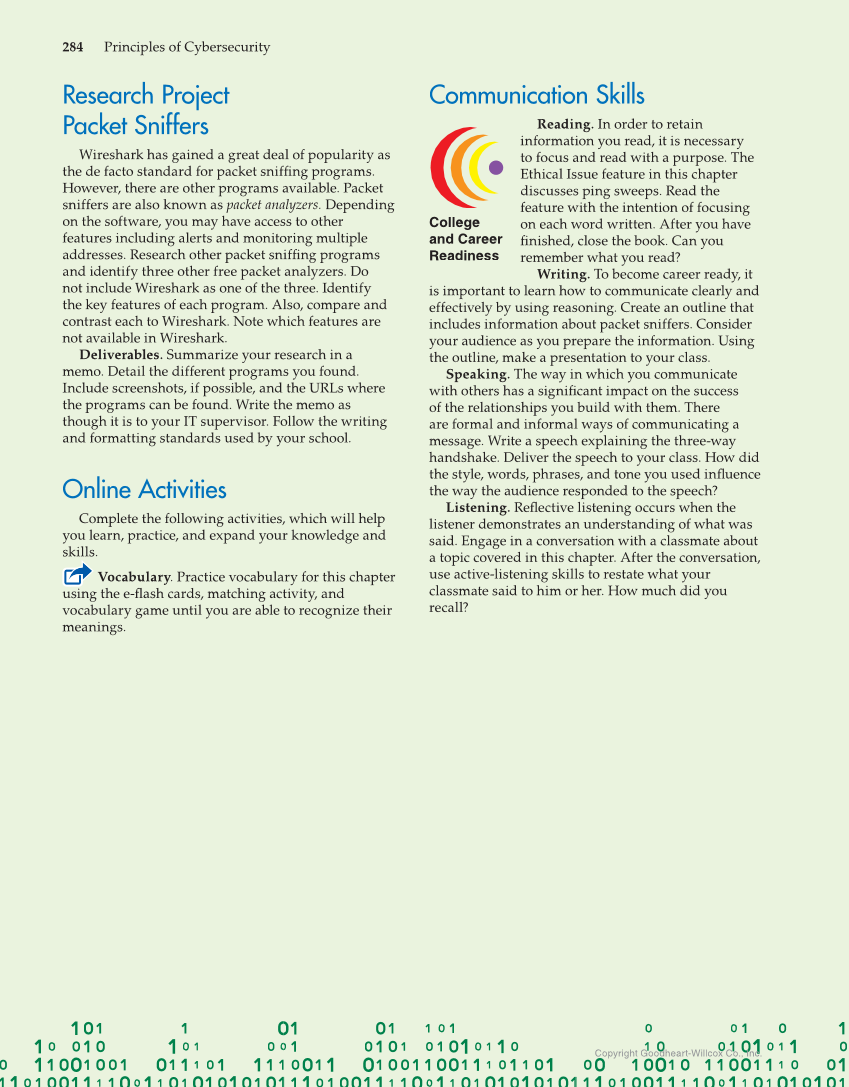Copyright Goodheart-Willcox Co., Inc. 284 Principles of Cybersecurity Research Project Packet Sniffers Wireshark has gained a great deal of popularity as the de facto standard for packet sniffi ng programs. However, there are other programs available. Packet sniffers are also known as packet analyzers. Depending on the software, you may have access to other features including alerts and monitoring multiple addresses. Research other packet sniffi ng programs and identify three other free packet analyzers. Do not include Wireshark as one of the three. Identify the key features of each program. Also, compare and contrast each to Wireshark. Note which features are not available in Wireshark. Deliverables. Summarize your research in a memo. Detail the different programs you found. Include screenshots, if possible, and the URLs where the programs can be found. Write the memo as though it is to your IT supervisor. Follow the writing and formatting standards used by your school. Online Activities Complete the following activities, which will help you learn, practice, and expand your knowledge and skills. Vocabulary. Practice vocabulary for this chapter using the e-fl ash cards, matching activity, and vocabulary game until you are able to recognize their meanings. Communication Skills Reading. In order to retain information you read, it is necessary to focus and read with a purpose. The Ethical Issue feature in this chapter discusses ping sweeps. Read the feature with the intention of focusing on each word written. After you have fi nished, close the book. Can you remember what you read? Writing. To become career ready, it is important to learn how to communicate clearly and effectively by using reasoning. Create an outline that includes information about packet sniffers. Consider your audience as you prepare the information. Using the outline, make a presentation to your class. Speaking. The way in which you communicate with others has a signifi cant impact on the success of the relationships you build with them. There are formal and informal ways of communicating a message. Write a speech explaining the three-way handshake. Deliver the speech to your class. How did the style, words, phrases, and tone you used infl uence the way the audience responded to the speech? Listening. Refl ective listening occurs when the listener demonstrates an understanding of what was said. Engage in a conversation with a classmate about a topic covered in this chapter. After the conversation, use active-listening skills to restate what your classmate said to him or her. How much did you recall? College and Career Readiness
